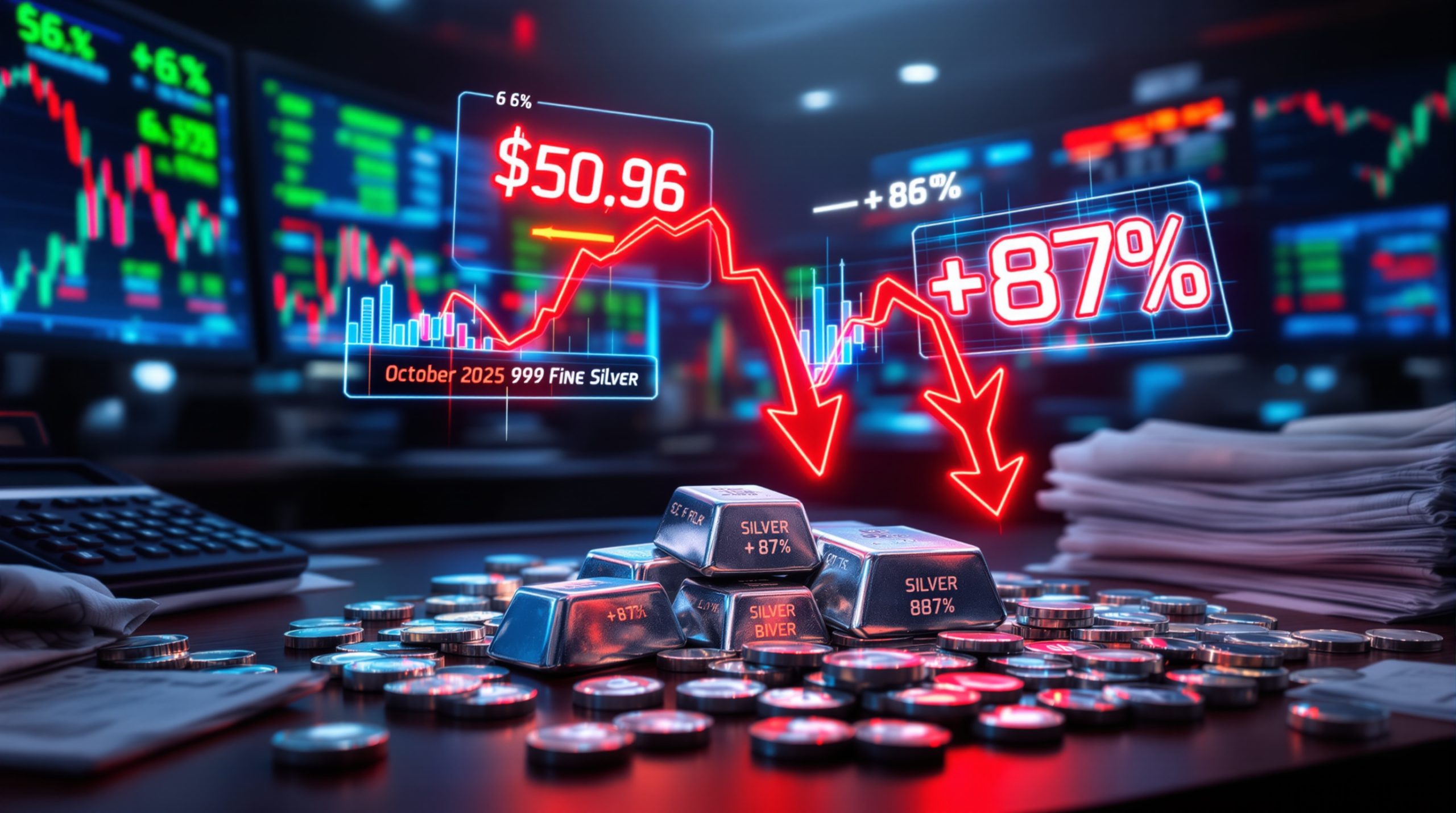What Is Driving the Divergence in the Titanium Market in 2025?
The titanium market in 2025 presents a fascinating study in contrasts, with high-end demand in the titanium market commanding premium prices while basic varieties struggle under persistent downward pressure. This bifurcation reflects deeper structural dynamics reshaping the industry landscape and creating distinct opportunities and challenges for market participants.
Current Market Landscape: Premium vs. Basic Products
The divergence between premium and basic titanium products has reached unprecedented levels in 2025. High-end titanium materials, particularly those serving military applications and specialized industrial uses, continue to experience robust demand and price stability. Meanwhile, basic varieties like titanium dioxide and titanium concentrate face ongoing challenges with weak demand and inventory pressures.
This market segmentation is clearly reflected in current pricing: Grade 0 sponge titanium commands premium prices of 53,500 yuan/mt, while rutile titanium dioxide trades at just 13,000-14,300 yuan/mt. This stark contrast highlights how differently these segments are responding to current economic conditions.
According to SMM's latest titanium market analysis, "High-end titanium products performed strongly, supported by military and export demand, while the civilian sector still awaited demand recovery." This pattern appears firmly established and shows little sign of convergence in the near term.
Military and Export Sectors: The Backbone of High-End Demand
Military procurement has emerged as the primary driver behind the resilience of premium titanium products. Defense applications require high-specification materials with unique performance characteristics that command significant price premiums. This demand pattern is particularly evident in the pricing of military-grade materials like TA1 titanium ingots (trading at 59,000-60,000 yuan/mt) and TC4 titanium ingots (reaching 67,000-69,000 yuan/mt).
The export market has also provided crucial support, with SMM noting that "sponge titanium market showed remarkable performance… driven by the landing of large overseas orders." This international demand has significantly increased trading volumes for high-grade titanium materials, creating supply constraints that further strengthen price points.
Unlike cyclical consumer markets, military procurement follows different patterns driven by strategic needs rather than economic cycles. This inelastic demand creates a stable foundation for premium titanium products that insulates them from broader market weaknesses affecting basic varieties.
How Are Different Titanium Product Segments Performing?
The performance disparity across titanium product segments provides a clear illustration of the market's current dynamics. By examining each segment individually, we can better understand the forces shaping this divergent market landscape.
Sponge Titanium: Star Performer in the Titanium Value Chain
Sponge titanium continues to outperform all other segments in the titanium market, with pricing strength across all grades:
- Grade 0 sponge titanium: Commanding premium prices of 53,500 yuan/mt
- Grade 1 sponge titanium: Trading steadily at 50,500 yuan/mt
- Grade 2 sponge titanium: Maintaining 49,500 yuan/mt despite broader market pressures
This segment has benefited tremendously from "the landing of large overseas orders," according to SMM analysts, which has significantly increased trading volumes. The current market is characterized by tight supply conditions, creating strong bullish sentiment among traders and producers.
Market participants should note that price adjustments are anticipated in early July 2025, potentially creating strategic buying or selling opportunities depending on positioning. The direction of these adjustments will likely be influenced by the continued strength of overseas demand and military procurement patterns.
Titanium Materials: Strong Performance in Specialized Applications
Military-grade titanium materials continue to show remarkable price resilience, with:
- TA1 titanium ingots: Trading at 59,000-60,000 yuan/mt
- TC4 titanium ingots: Reaching 67,000-69,000 yuan/mt
As SMM reports, "Cost support from upstream sponge titanium, combined with an increase in military orders, drove up prices for high-end products." This cost-push dynamic, coupled with steady demand, has created a favorable pricing environment for specialized titanium materials.
The performance divergence between military and civilian applications is particularly noteworthy. While military-grade materials maintain strong pricing power, civilian-grade materials have seen price weakening, with SMM noting that "in the civilian sector, affected by weak demand from industries such as chemicals, transaction prices loosened."
Titanium Dioxide: Struggling Despite Production Adjustments
The titanium dioxide segment continues to face significant challenges despite producer efforts to balance the market:
- Rutile titanium dioxide: Trading at 13,000-14,300 yuan/mt
- Anatase titanium dioxide: Priced between 12,000-12,800 yuan/mt
- Chloride-process titanium dioxide: Holding at 16,000-17,000 yuan/mt
- Export FOB prices: $1,890-$1,950/mt, reflecting limited international demand
According to SMM, "The titanium dioxide industry has seen an expansion in production cuts, but downward pressure on prices has not yet eased." This indicates that demand weakness is outpacing supply adjustments, creating persistent inventory challenges throughout the supply chain.
Mainstream producers have maintained quotes around 13,000 yuan/mt despite these challenges, while export enterprises are "actively seeking new orders to alleviate inventory pressure." This suggests that inventory reduction has become a primary strategic focus for producers in this segment.
Titanium Concentrate: Seasonal Weakness and Downstream Pressure
The titanium concentrate market reflects the weakness in downstream applications, with pricing under continued pressure:
- Domestic titanium concentrate (TiO₂≥47%): Priced at 2,000-2,150 yuan/mt
- Lower-grade concentrate (TiO₂≥46%): Trading at 1,700-1,750 yuan/mt
SMM attributes this weakness to "seasonal factors" combined with "continued weak downstream demand." The market is characterized by low purchase willingness and a dominant wait-and-see sentiment among buyers, creating stagnant trading conditions.
This segment's performance is directly linked to downstream titanium dioxide market trends, creating a ripple effect that reinforces the overall weakness in basic titanium products. Without significant improvement in downstream demand, iron ore price trends and titanium concentrate prices are likely to remain under pressure.
Why Is the Market Experiencing This Divergence?
The titanium market's bifurcation stems from a complex interplay of supply and demand factors that are affecting different product segments in distinct ways. Understanding these underlying drivers provides crucial context for market participants navigating this challenging landscape.
Supply-Side Factors Creating Market Imbalances
On the supply side, several factors are contributing to the current market divergence:
- Raw material cost variations: Different grades and products face distinct cost structures, creating profitability differentials
- Production capacity utilization: Premium segments operating at higher capacity utilization rates than basic segments
- Inventory accumulation patterns: Basic products experiencing persistent inventory pressure despite production cuts
- Supply constraints in high-grade titanium: Creating favorable pricing dynamics for premium products
The effectiveness of production adjustments varies significantly by segment. As SMM notes, titanium dioxide manufacturers have "expanded production cuts," yet this has not been sufficient to alleviate inventory pressure or stabilize prices. This suggests that the supply-side response has not yet matched the scale of demand weakness in basic segments.
For premium products, particularly sponge titanium, the supply situation is markedly different. SMM characterizes this market as having "tight supply" with "strong bullish sentiment," creating conditions for potential price increases in early July. This supply-demand imbalance is a key factor supporting the price premium for high-grade titanium products.
Demand-Side Drivers Reinforcing Market Segmentation
Demand patterns across different end-use sectors are perhaps the most significant factor driving market divergence:
- Military procurement: Providing consistent, inelastic demand for premium titanium grades
- Chemical industry weakness: Creating demand gaps for civilian applications of titanium
- Export market dynamics: Offering selective opportunities, particularly for high-grade products
- Seasonal patterns: Affecting purchasing behavior differently across product segments
SMM emphasizes that "military demand will continue to support prices for high-end titanium products," while noting that "recovery in the civilian sector will still take time." This demand divergence creates fundamentally different market conditions for different titanium product segments.
The titanium dioxide market illustrates how downstream demand weakness can ripple through the supply chain. Despite production cuts, prices remain under pressure due to "continued weak downstream demand," affecting not only titanium dioxide itself but also upstream materials like titanium concentrate.
The timing of demand recovery in civilian sectors will be crucial in determining how long the current market divergence persists. SMM suggests that this recovery "will still take time," indicating that the bifurcated market pattern may continue for the foreseeable future, similar to what analysts predict in copper price predictions.
What Are the Key Indicators to Monitor for Market Direction?
For market participants navigating this complex landscape, identifying and tracking the right indicators is essential for anticipating market movements and making informed decisions.
Critical Metrics for Titanium Market Analysis
Several key metrics warrant close attention from those seeking to understand titanium market dynamics:
- Overseas order fulfillment rates: Particularly for sponge titanium, where large overseas orders have significantly impacted trading volumes
- Production cut implementation: Effectiveness of titanium dioxide manufacturers' output reductions in balancing supply
- Inventory level changes: Throughout the supply chain, especially for products facing persistent inventory pressure
- Military procurement patterns: Timing and volume of defense-related orders for premium titanium grades
- Chemical industry recovery indicators: As a key downstream sector for civilian titanium applications
SMM specifically recommends that market participants "pay attention to the landing of overseas orders and the enforcement of domestic production cuts." These factors will be particularly important in determining whether current market patterns intensify or begin to converge.
Export market dynamics provide another crucial indicator, with FOB prices for rutile titanium dioxide ($1,890-$1,950/mt) reflecting global demand conditions. Changes in these export prices can signal shifts in international market sentiment that might eventually impact domestic pricing.
Forward-Looking Market Signals
Several upcoming data points and developments will provide important signals about market direction:
- June production and sales data: SMM notes they "will update the production and sales situation of manufacturers in June after thorough surveys"
- Early July price adjustments: Anticipated for sponge titanium, potentially setting the tone for Q3
- Q3 order placement patterns: Particularly important for gauging whether civilian demand is beginning to recover
- Inventory reduction progress: Through both production discipline and expanded export efforts
These forward-looking indicators will be crucial in determining whether the current market divergence represents a temporary phenomenon or a more structural shift in titanium market dynamics.
For titanium dioxide and concentrate, signs of downstream demand improvement would be particularly significant, as current weakness in these segments is primarily demand-driven despite supply-side adjustment efforts.
How Might the Market Evolve in Coming Months?
The titanium market's future trajectory will depend on how current dynamics evolve and whether new factors emerge to alter the established patterns. Both short-term projections and longer-term considerations provide important context for market participants.
Short-Term Market Projections (Q3-Q4 2025)
In the near term, several patterns appear likely to continue:
- Continued strength in military-driven segments: Premium titanium products will likely maintain price support from defense applications
- Persistent pressure on basic products: Titanium dioxide and concentrate may continue to face challenges without significant demand improvement
- Price adjustments for sponge titanium: Expected in early July, potentially setting the tone for Q3
- Gradual inventory normalization: Through continued production discipline and expanded export efforts
- Selective relief from export markets: Particularly for manufacturers actively seeking international orders
SMM's assessment that "the market divergence pattern is likely to continue" suggests that convergence between premium and basic segments remains unlikely in the immediate future. They specifically note that "recovery in the civilian sector will still take time," indicating that demand-driven weakness in basic segments will not resolve quickly.
For sponge titanium, the anticipated price adjustments in early July will provide an important signal about market direction. If prices increase as expected, this would reinforce the current divergent pattern and potentially widen the gap between premium and basic titanium products, much like the dynamics observed in the iron ore forecast 2025.
Long-Term Market Considerations
Looking beyond the immediate horizon, several factors could influence the titanium market's structural dynamics:
- End-use application shifts: Changing patterns of titanium consumption across industries
- Production capacity rationalization: Potential consolidation or capacity reductions in oversupplied segments
- International trade developments: Evolving global supply chains and trade relationships
- Technological innovations: Creating new demand channels or altering production economics
- Raw material supply constraints: Potentially affecting long-term production capacity and costs
While the current market divergence reflects specific conditions in 2025, the longer-term outlook depends on whether these conditions persist or evolve. If civilian sector demand remains structurally weak, this could lead to more fundamental changes in the titanium industry landscape, including potential capacity rationalization in affected segments.
Conversely, if civilian demand eventually recovers, the market could gradually move toward greater balance, though the timing and pace of such convergence remain uncertain based on current indicators.
FAQ: Understanding the Titanium Market in 2025
What factors are supporting high-end titanium product prices?
High-end titanium products benefit from several supportive factors creating price resilience:
- Military procurement: Defense applications require specific material properties with limited substitution possibilities
- Supply constraints: Particularly for high-grade sponge titanium, creating favorable pricing dynamics
- Export demand: Large overseas orders increasing trading volumes and supporting prices
- Specialized applications: High-performance requirements limiting substitution possibilities
- Cost support from upstream: Sponge titanium prices providing foundation for finished products
As SMM notes, "Cost support from upstream sponge titanium, combined with an increase in military orders, drove up prices for high-end products." This combination of demand strength and supply limitations creates a fundamentally different market environment than that facing basic titanium products.
Why haven't production cuts stabilized titanium dioxide prices?
Despite expanded production cuts, titanium dioxide prices remain under pressure for several reasons:
- Demand weakness outpacing supply adjustments: Cuts insufficient relative to demand decline
- Persistent inventory pressure: Throughout the supply chain, creating continued selling pressure
- Seasonal factors: Affecting consumption patterns and purchasing behavior
- Wait-and-see buyer sentiment: Delaying purchases in anticipation of further price declines
- Export market conditions: International prices ($1,890-$1,950/mt FOB) providing limited support
SMM observes that "the titanium dioxide industry has seen an expansion in production cuts, but downward pressure on prices has not yet eased." This suggests that demand-side issues, rather than supply imbalances alone, are the primary factor preventing price stabilization.
Until downstream demand shows meaningful improvement, production cuts may continue to have limited effectiveness in supporting titanium dioxide prices.
How are civilian sector applications affecting titanium demand?
Civilian sector weakness, particularly in chemical industries, is creating significant challenges:
- Reduced consumption volumes: Lower production in downstream applications
- Price sensitivity: Creating downward pressure on input material costs
- Substitution possibilities: For certain applications, encouraging switching to alternatives
- Inventory management: Cautious purchasing patterns to minimize working capital
- Project delays: Affecting material consumption rates
SMM specifically identifies the chemical industry as a weak spot, noting that "in the civilian sector, affected by weak demand from industries such as chemicals, transaction prices loosened." This industry-specific weakness has broader implications for titanium demand patterns.
The timing of civilian sector recovery remains uncertain, with SMM suggesting that this "will still take time." This creates an ongoing demand gap that continues to affect basic titanium products disproportionately compared to defense-oriented applications.
What role do international markets play in current titanium dynamics?
International markets are influencing the titanium landscape in several important ways:
- Sponge titanium demand: "Large overseas orders" significantly increasing trading volumes
- Export opportunities: For titanium dioxide, with enterprises "actively seeking new orders"
- Price benchmarking: Export FOB prices ($1,890-$1,950/mt) reflecting global market conditions
- Inventory relief channels: Providing potential outlet for domestic oversupply
- Competitive dynamics: International producer relationships affecting market balance
The differential impact of international markets across product segments is noteworthy. For sponge titanium, overseas orders have created a significant positive demand shock, while for titanium dioxide, export markets represent a potential relief valve for inventory pressure rather than a price support mechanism.
Monitoring international market developments will be crucial for understanding how global demand patterns might influence domestic market conditions going forward, particularly as gold price analysis 2025 shows similar international influence patterns.
When might the market see convergence between premium and basic segments?
The timing of potential market convergence depends on several factors:
- Chemical industry recovery: As a key driver of civilian titanium demand
- Production discipline effectiveness: Particularly in titanium dioxide manufacturing
- Inventory normalization progress: Throughout the supply chain
- Export market development: Potential for expanded international demand
- Seasonal pattern shifts: As markets move beyond current seasonal weakness
SMM's assessment that "the market divergence pattern is
Ready to Spot the Next Major Mining Discovery?
Stay ahead of the market with Discovery Alert's proprietary Discovery IQ model, delivering instant notifications on significant ASX mineral discoveries and transforming complex data into actionable insights. Explore how major mineral discoveries can generate substantial returns by visiting the Discovery Alert discoveries page and begin your 30-day free trial today.




